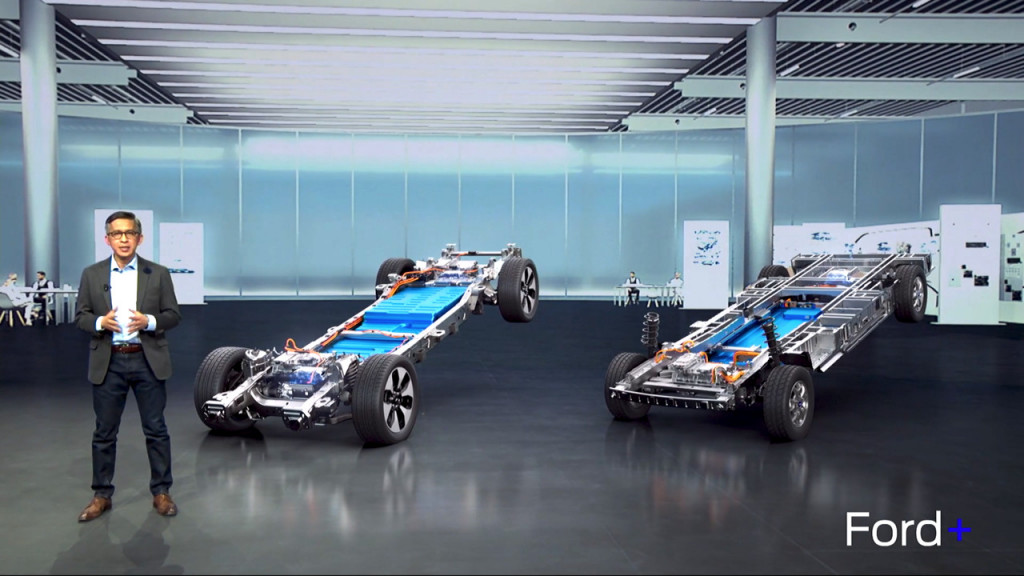Ford CEO Jim Farley has already upped F-150 Lightning production to 150,000 a year, and he’s pressing production of its Mustang Mach-E toward 200,000 a year, effectively seeing it reengineered along the way.
At the same time, this ramp has been part of a heavy lift at Ford—literally airlifts of parts at times—that’s costing the company. In a quarterly report and corresponding financial call with analysts Thursday, the company and its top executives noted with unusual bluntness that Ford is underperforming in one simple measure: that by the cost of goods sold as a percentage of revenue, versus the competition, it should be doing better.
Call that awareness an investment in the future—a future in which Ford is making sure its cars, and specifically its EVs, are far simpler and easier to scale up while at the same time ready to compete in a potential EV price war.
“Now we are deep into development of our second generation EVs, including our next-generation electric full-size pickup—which, by the way, is awesome,” Farley said, referring to the truck that the CEO has previously said will be made in “incredibly high volume” at the upcoming BlueOval City plant in Tennessee.
Ford EV platforms for mid-decade, presented by Hau Thai-Tang

Ford EV platforms for mid-decade, presented by Hau Thai-Tang
“These EVs will be fully software updatable; that means a brand-new electric architecture,” Farley clarified, noting the software architecture not to be confused with the comprehensive vehicle platforms also being developed. “And they are going to be radically simplified: imagine three body styles, each with volume potential of up to one million units, and just a handful of orderable combinations.”
Farley said that will mean better quality and lower manufacturing costs, among many benefits.
No haggling, new software, and leaner manufacturing
Meanwhile, the company is plunging into new ways of doing business, in multiple ways. Its no-haggle Model E dealer program starts in January 2024, and it’s been adopted by nearly two-thirds of dealerships.
“Next January we’ll be selling EVs in high volume with virtually no inventory, a simple e-commerce platform for our customers, a non-negotiated price set by the local dealer, and remote pickup and delivery for all customer experiences,” Farley said.
Farley continues to pitch software and customer experiences as some key differentiators for Ford. He said that with a new plan and “real strategic clarity,” Ford is ready to execute and deliver on the product and financial aspects.

2022 Ford F-150 Lightning
Improvement will need to come in the company’s industrial platform, both in improving its manufacturing system on a daily basis and in cutting complexity in engineering as products are developed.
Fewer choices, running on smaller battery packs
“On the category side, we do not want to have too many top hats, because that costs a lot to engineer,” Farley said, referring to the upper portion of the vehicle that’s designed to fit over a platform. “We want to have minimum choice for customers.”
“But we want to design the smallest possible battery for competitive size,” said Farley, who also noted the need for “radical simplification”—with far fewer fasteners and brackets, for instance.
And as the CEO has hinted before, he sees China as a serious threat to the EV business, as well as a “huge price war” over EVs.
“At Ford, we have to expect negative pricing; and that means software and other items like that becoming even more critical,” Farley added.

Ford E-Transit with tablet and Ford Pro fleet software
The company’s upcoming fully-updatable electric architecture will make the difference, and add revenue potential, Farley emphasized, pointing to safety and security as one area that will enable—with video content, teen-driving aspects, and supplemental roles for home security.
“What we’ve learned on Pro is that we can make real money on software,” he said.
Read the full article here


